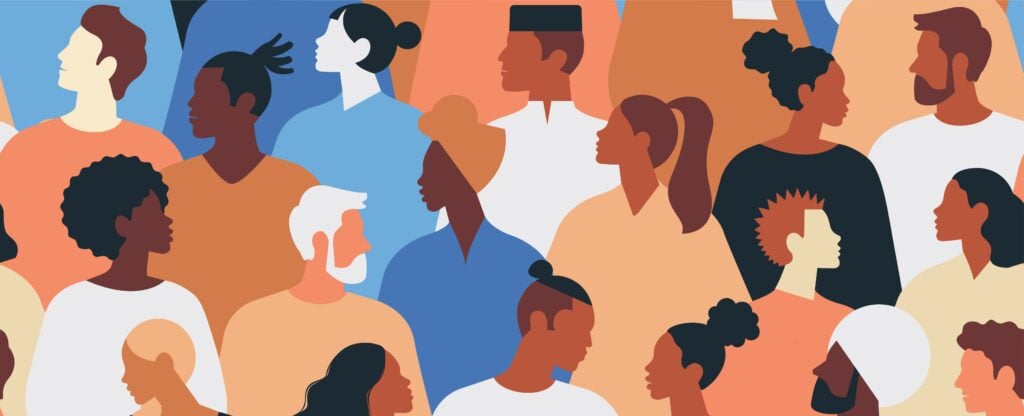Conversion therapy and why it’s harmful to mental health
Reviewed by Robert Bogenberger, PhD

What Is Conversion Therapy?
Conversion therapy, also known as reparative therapy, gender critical therapy, or sexual reorientation, refers to a set of harmful practices that attempt to alter a person’s sexual orientation or gender identity. Examples of conversion therapy include trying to turn a gay, lesbian, or bisexual individual straight, or trying to align a transgender or nonbinary individual with the gender they were assigned at birth (cisgender).
Conversion therapy methods in the United States are primarily talk or faith-based therapy, but as recently as the early 2000s have included chemically induced aversion experiences, such as:
-
- Nausea-producing drugs
- Electrical shocks
- Hormone-altering drugs
Some therapists and individuals may have positive intentions with conversion therapy, such as fitting into a particular family or religious structure, but regardless of the intentions or therapy approach, conversion therapy does not work and consistently produces negative effects. A 2020 national survey by the Trevor Project found that 10% of LGBTQIA+ youth reported undergoing conversion therapy, with 78% of those before the age of 18.
Is Conversion Therapy Harmful?
Conversion therapy is associated with an increased risk for mental health concerns including attempted suicide. A study from the American Journal of Public Health1 that found that those who underwent conversion therapy reported that they attempted suicide at a rate more than twice as high as those who did not. They were also 2.5 times as likely to report multiple suicide attempts in the past year.
Because of the overwhelming proof of how harmful and ineffective conversion therapy is, it is strongly opposed by all professional medical associations.
Why Is Conversion Therapy Harmful?
It Is Rooted in Shame
Conversion therapy is a shame-based practice that undermines an individual’s sense of sexual orientation or gender identity. Conversion therapy does not focus on helping LGBTQIA+ individuals explore their identity or find support. Instead, it encourages them to suppress who they really are and feel ashamed of their identity.
Along with shame, conversion therapy can result in:
-
- Guilt
- Helplessness
- Decreased self-esteem
- Increased self-hate
- Social withdrawal
- Feeling dehumanized
- Depression
- Substance abuse
- Risky sexual behaviors
There Are No Standards of Practice
The American Academy of Child and Adolescent Psychiatry, American Psychological Association, American Psychiatric Association, and the World Health Organization all disavow any form of conversion therapy as unproven, ineffective, and damaging. A growing number of states in the U.S. have also issued bans on conversion therapy.
While the rejection of conversion therapy is a positive thing, it also means that there are no standards for how to perform it “correctly.” Without standards in place, there is no ethical way to offer conversion therapy.
It Doesn’t Work
Not only is conversion therapy damaging to one’s mental health, but there is also no evidence that it works2. There is, however, an overwhelming amount of evidence showing how conversion therapy harms LGBTQIA+ individuals.
Is Being LGBTQIA+ Harmful?
Being LGBTQIA+ is not harmful, and all major psychological associations agree that identifying as such is a normal part of human sexuality and gender expression. The harm associated with being LGBTQIA+ is due to social stigma and lack of support, not the identity itself. This includes an increased risk for mental health concerns, homelessness, and being a victim of violence.
Is Being Gay a Mental Illness?
Being gay or identifying as any other sexual identity is not a pyschiatric disorder as defined by the Diagnostic and Statistical Manual of Mental Disorders, Fifth Edition (DSM-5). Earlier versions had considered any divergence from heterosexual or cisgender expression to be forms of mental illness. This view pathologized inborn expressions of sexuality and gender. Essentially, variations in sexual and gender identity were treated like diseases (pathogens) instead of healthy variations of human identity, such as differences in skin tone or hair color.
Depathologizing the spectrum of human sexuality and gender identity took many decades. The American Psychiatric Association finally removed homosexuality from its list of mental illnesses in 19733 and removed identifying as transgender in 20134.
While being gay is not a mental illness, members of the LGBTQIA+ community are at a higher risk for mental health concerns including depression, anxiety, and substance use disorders. This is due to a range of factors, including:
-
- Trauma from family and religious rejection
- The pressure of coming out
- Inadequate physical and mental healthcare
Can a Person’s Sexuality or Gender Identity Change?
A person’s sexual identity and gender identity are determined through self-discovery. This means that a person may identify as one gender or sexual orientation and discover later that a different identity feels more suited to their internal experience.
Sexual identity and gender identity cannot be changed by external forces or pressure. These efforts often instead result in shame and suppression of true identity, increasing a person’s risk for mental health problems.
Is Conversion Therapy Illegal?
A growing number of states have recognized the harm of conversion therapy and have laws and regulations in place to protect LGBTQIA+ youth. These places include:
-
- California
- Colorado
- Connecticut
- Delaware
- Hawaii
- Illinois
- Maine
- Maryland
- Massachusetts
- Nevada
- New Hampshire
- New Jersey
- New Mexico
- New York
- Oregon
- Rhode Island
- Utah
- Virginia
- Vermont
- Washington
- The District of Columbia
- Puerto Rico
While a growing number of cities and states have made efforts to protect LGBTQIA+ youth from conversion therapy, it remains legal in more than 30 states. According to the UCLA Williams Institute5, 16,000 LGBT youth in these remaining states will undergo conversion therapy before they turn 18.
Mental Health Resources for LGBTQIA+ Individuals
LGBTQIA+ individuals face challenges that put them at a greater risk for mental health concerns. For many, exploring their sexual orientation and gender identity is a normal and healthy part of life, but comes with some difficult feelings.
If you’re struggling to understand or fully express your sexual or gender identity, help is available. A therapist can work with you to address past trauma, understand your identity, and help you live a healthier, more authentic life. Find an LGBTQIA+ therapist near you today.
Get Help Now
If you are in crisis and need help now, please call or text one of the following helplines:
-
- The Trevor Project6: Call the TrevorLifeline at 1-866-488-7386 or text START to 678-678.
- Crisis Text Line7: Text HOME to 741741
- 988 Suicide & Crisis Lifeline8: Call 988 or 1-800-273-TALK (8255)
Sources
- https://ajph.aphapublications.org/doi/10.2105/AJPH.2020.305701
- https://www.thetrevorproject.org/get-involved/trevor-advocacy/50-bills-50-states/about-conversion-therapy/
- https://www.ncbi.nlm.nih.gov/pmc/articles/PMC4695779/
- https://www.apa.org/topics/lgbt/transgender
- https://williamsinstitute.law.ucla.edu/publications/conversion-therapy-and-lgbt-youth/
- https://www.thetrevorproject.org/
- https://www.crisistextline.org/
- https://suicidepreventionlifeline.org/
About the author
The editorial team at therapist.com works with the world’s leading clinical experts to bring you accessible, insightful information about mental health topics and trends.
Related articles

How to create positive change every day
Dr. Martin Luther King Jr. advocated for justice, peace, and freedom. You can...

Easing access to therapy for Black women and girls
People of color are much less likely to receive mental health care. In response...

Race, ethnicity, and mental health
Race and ethnicity are invented concepts, but they still affect how others...

Why self-love can be challenging for women
Self-love means consistently valuing yourself as a person. But when society...